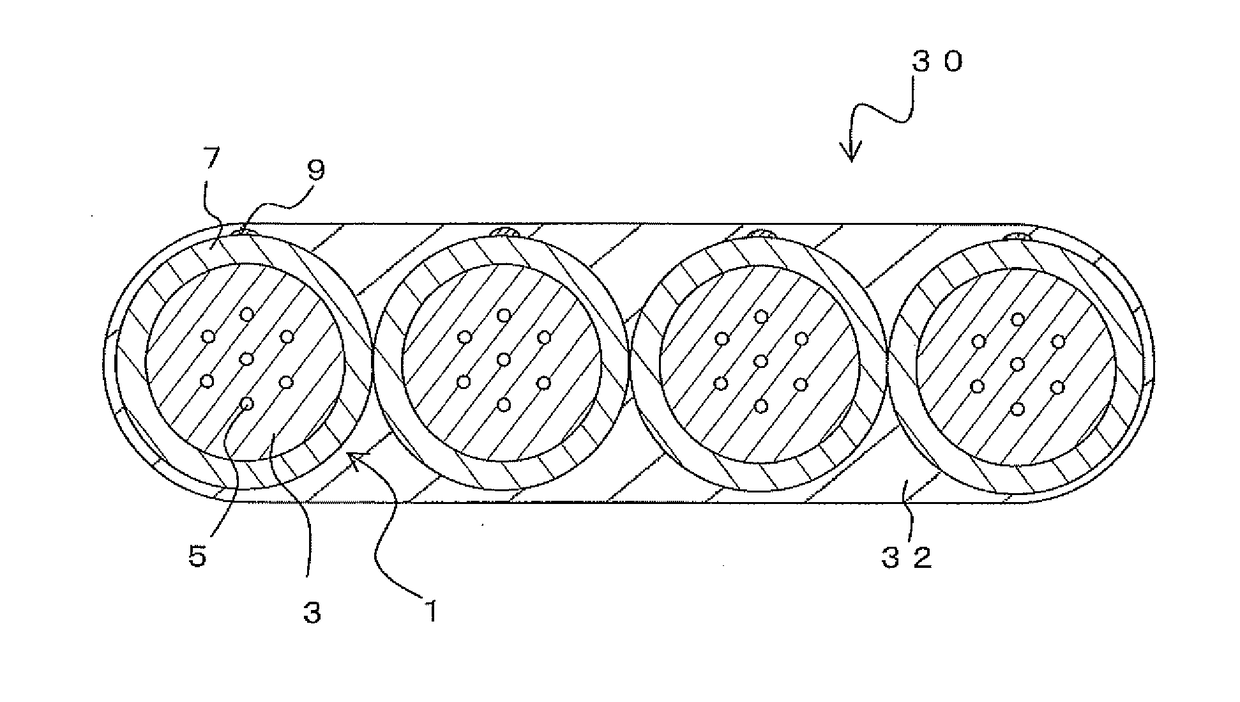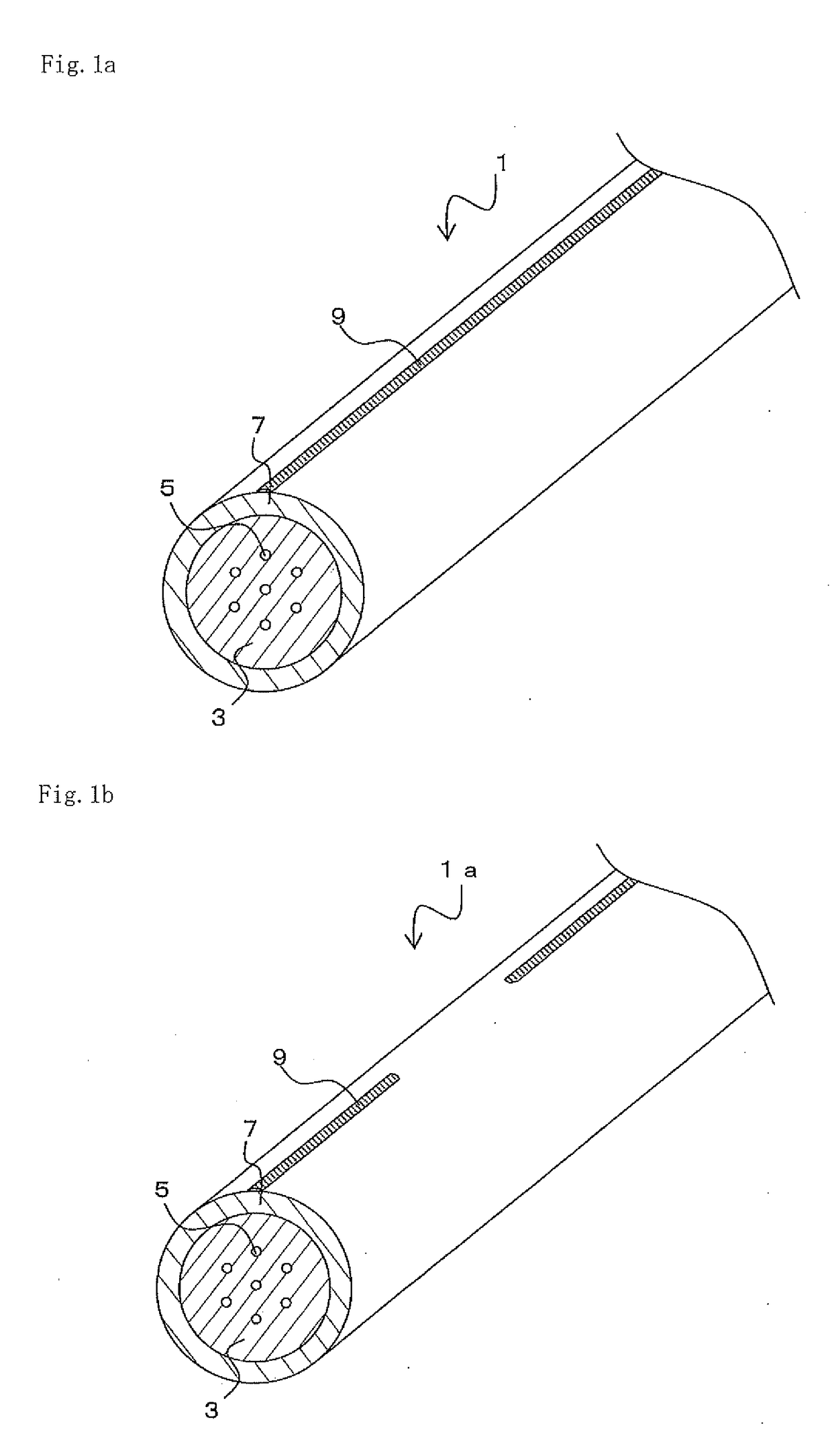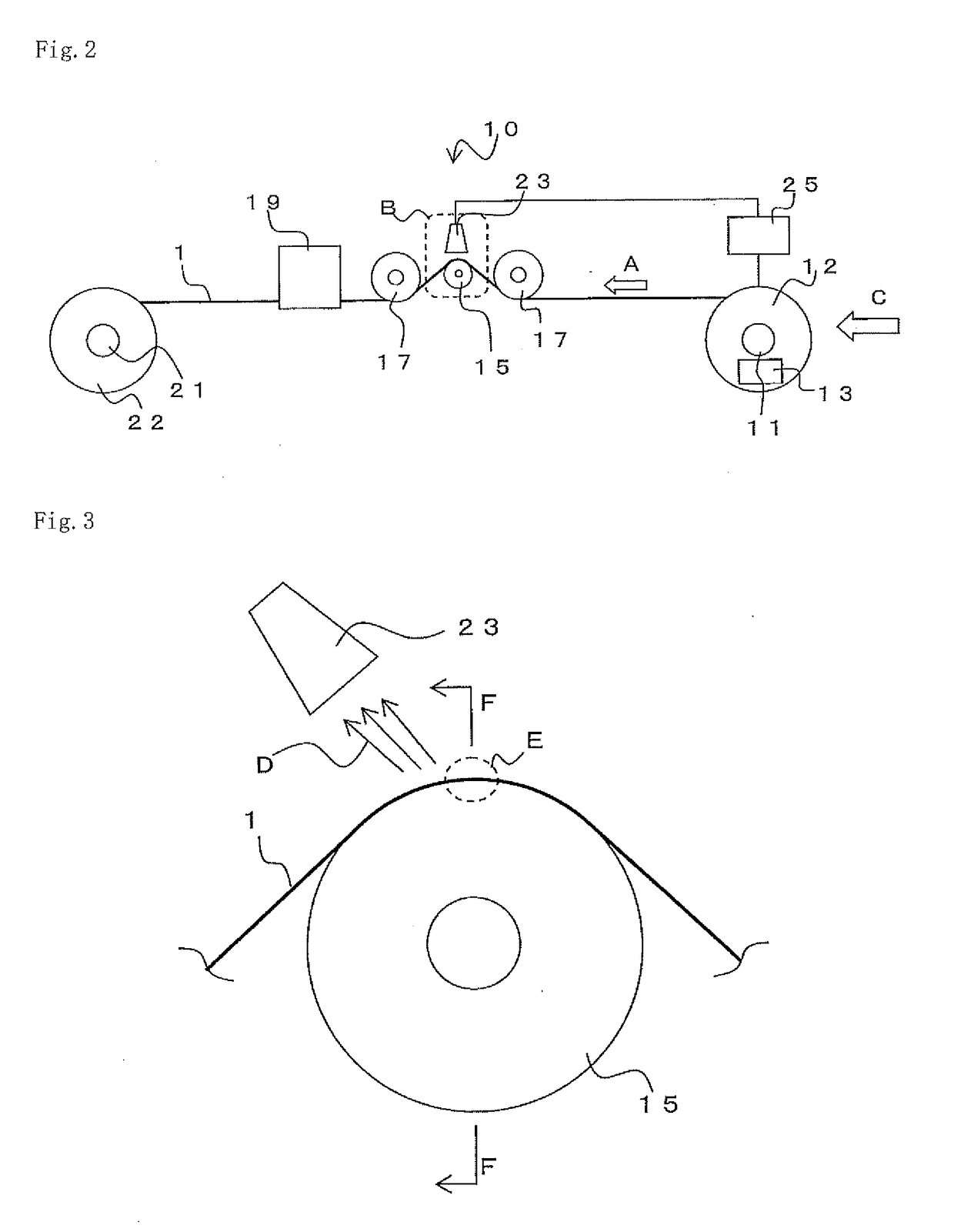Optical Fiber, and Optical-Fiber Production Method
a production method and optical fiber technology, applied in the field of optical fibers, can solve the problems of increasing the difficulty of connecting single-core fibers, and approaching the limit of the transmission capacity of presently used single-core optical fibers, and achieve the effect of easy identification
- Summary
- Abstract
- Description
- Claims
- Application Information
AI Technical Summary
Benefits of technology
Problems solved by technology
Method used
Image
Examples
first embodiment
[0054]Hereinafter, an optical fiber according to an embodiment will be described. FIG. 1a is a schematic view of a multi-core fiber 1, which is an optical fiber.
[0055]The multi-core fiber 1 is an optical fiber that has a circular cross section, and includes a plurality of cores 5, which are arranged at predetermined intervals, and a cladding 3, which has a refractive index lower than that of a plurality of the cores and are formed on the periphery of a plurality of the cores. For example, the multi-core fiber 1 has total of the seven cores 5, one of which is disposed at the center of the multi-core fiber 1 with the others surrounding the center core and being disposed at each vertices of a regular hexagon. That is, the center core 5 and the other surrounding six cores 5 are all at regular intervals. Also, for the six cores 5, the distance between the adjacent cores 5 is the same. The core 5 becomes a waveguide for signal light. The arrangement of the cores 5 is not limited to the ex...
second embodiment
[0100]Next, a second embodiment will be described. In the first embodiment, an example in which the light introducing part 13 is at an end of the multi-core fiber 1 was described. With this method, light can be introduced into a selected particular core only. However, another method can be used to introduce light into the multi-core fiber 1.
[0101]FIG. 8a is a drawing showing a colored resin applying apparatus 10a. In the descriptions hereinafter, the same notations will be used for the same compositions as in the colored resin applying apparatus 10 and redundant descriptions will be omitted. The colored resin applying apparatus 10a is approximately similar to the colored resin applying apparatus 10 except for a light introducing part 13a, which substitutes the light introducing part 13.
[0102]The light introducing part 13a includes a light-introducing bending portion 27 and a light source between a pair of guides 29. The light-introducing bending portion 27 is a roller that bends the...
third embodiment
[0105]Next, a third embodiment will be described. FIG. 8b is a drawing showing a colored resin applying apparatus 10b. The colored resin applying apparatus 10b is approximately similar to the colored resin applying apparatus 10 except that the bobbin controller 25 controls the bobbin 22, not the bobbin 12.
[0106]In the colored resin applying apparatus 10b, like in the colored resin applying apparatus 10, the optical detector 23 detects intensity of light leaked from the optical fiber bending part 15 and the twisting of the multi-core fiber 1 in the rotational direction is detected. The bobbin controller 25 controls the posture of the bobbin 22 corresponding to the rotational direction and the rotation amount of the multi-core fiber 1 found out from the intensity of leaked light detected. More specifically, the bobbin controller 25 tilts a rotational surface of the bobbin 22. Thus, it is possible to always maintain the uniform positions of the cores 5 on the cross section perpendicula...
PUM
 Login to View More
Login to View More Abstract
Description
Claims
Application Information
 Login to View More
Login to View More - R&D
- Intellectual Property
- Life Sciences
- Materials
- Tech Scout
- Unparalleled Data Quality
- Higher Quality Content
- 60% Fewer Hallucinations
Browse by: Latest US Patents, China's latest patents, Technical Efficacy Thesaurus, Application Domain, Technology Topic, Popular Technical Reports.
© 2025 PatSnap. All rights reserved.Legal|Privacy policy|Modern Slavery Act Transparency Statement|Sitemap|About US| Contact US: help@patsnap.com



